JF Ptak Science Books Quick Post
Christopher Columbus was born in 1451, and born sometime over a three-month period that no one seems to be able to button down. He (known as Christophorus Columbus in Latin, and Cristoforo Colombo in Italian and Cristobal Colon in Spanish) and in an audacious dash to shortcut European rivals in trade with the East became one of the first Europeans to explore the Americas. In his first of four voyages to what would be called "the New World", he landed in the Bahama archipelago, and in time explored the Greater and Lesser Antilles, Central America, and the Caribbean coast of Venezula, claiming all for the Spanish Kingdom.
The first images of his adventures appeared in Oceanica Classis, printed by Johann Bergmann de Olpe, in Basle, in 1493--the first, below, showing an imaginary view of the Island of Hispanola. In the image of Insula Hyspania, below, we see Native peoples running from the approaching ship and long boat--they of course did not run far enough. (By the end of the 1620's, something like 75% of the indigenous population in contact with Europeans (or in contact with people in contact with them) were dead, mostly from epidemics and diseases and lesser illness for which they had no immune systems.)
Four (of the other eight, two of which were repeated) images from this fantastic work can be seen below:
From John Boyd Thacher, Christopher Columbus: his Life, his Works, his Remains... (New York, Putnam, 1903) comes the following description of the book, but mainly of interest here for the description of the illustrations:
"(The book comes) from the press of Johannes Froben of Basle. There are eight woodcuts, two of which are repeated, as follows:
A single escutcheon of Castile and Leon, with the words Regnu Hyspanie on the recto of the first leaf.
A vessel, with the words Oceanica Classis on the verso of the first leaf.
A number of men landing, and the words Insula Hyspana on the verso of the second leaf.
A rude attempt to draw a map, with the words: Fernada, Ysabella, Hyspana, Salvatorie, Conceptores, Marie, and a caravel on the verso of the third leaf."
A vessel, with the words Oceanica Classis on the recto of the fifth leaf.
A fort in the process of construction, and the words Insula Hyspana on the verso of the seventh leaf.
A full-length portrait of Ferdinand, holding the escutcheon of Castile and Leon in his right hand and that of Granada hanging from his left arm, having a standard in his left hand, with the words Fernad' Rex Hyspana on the recto of the tenth leaf.
The coat-of-arms of the city of Granada, with the word Granata overhead and in a horizontal, although not in a perfectly straight, line, on the verso of the tenth leaf.


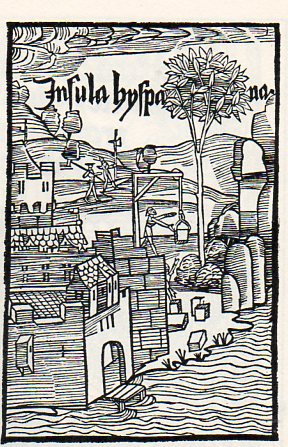
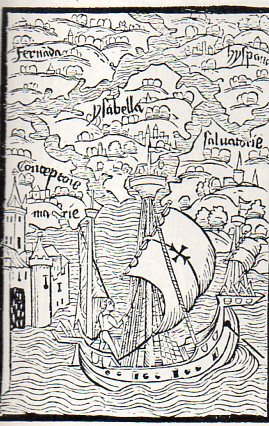
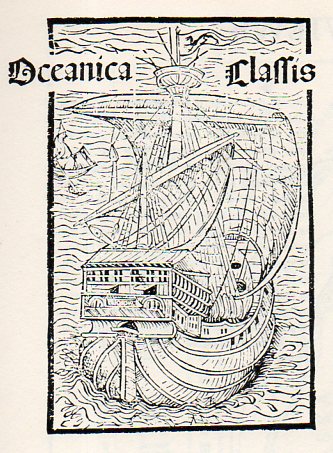
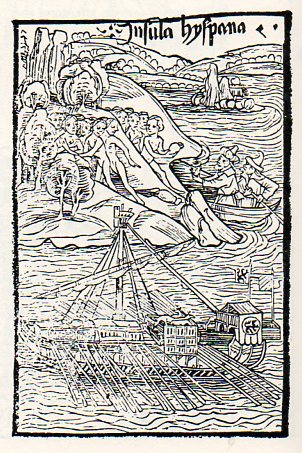
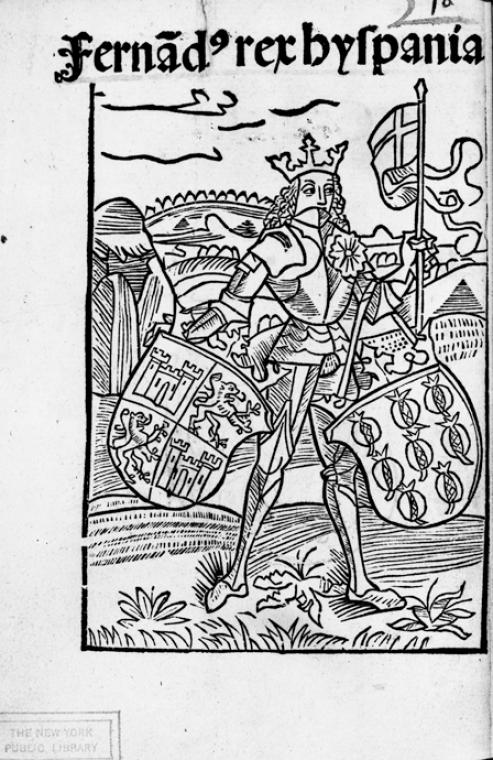

Comments